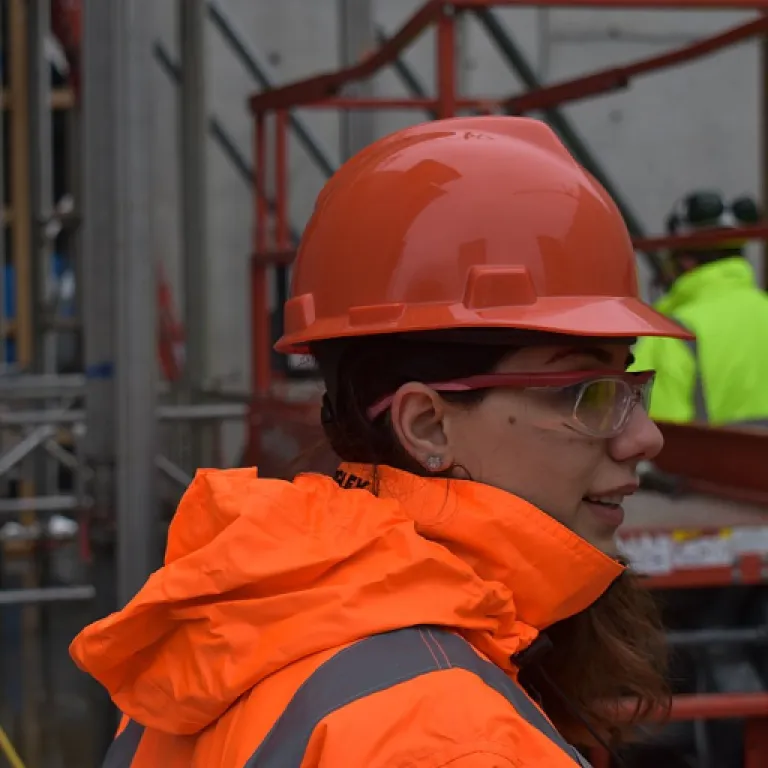
Embracing Digital Transformation
Integrating Digital Tools into Workspaces
The digital transformation is not just a passing trend, it's an essential shift that is reshaping the way we perceive work environments. Incorporating these technological changes smoothly into the physical and digital landscapes of offices is crucial for business success.
To successfully embrace these digital advancements, creating a work environment that supports easy access to tools and resources for all employees is vital. This integration encourages collaboration, innovation, and a seamless experience designed to foster productivity.
- Flexible Office Spaces: Transform traditional workspaces to be more adaptable and able to support various working methods.
- Clear Communication Tools: Utilize platforms that facilitate communication and management, ensuring that everyone is on the same page, whether they are in the office environment or part of a hybrid work model.
- User-friendly Experience: Choose technologies that are straightforward for employees to use, minimizing the learning curve to maximize efficiency and engagement.
- Data-driven Decisions: Leverage analytics generated from digital platforms to continually refine and enhance the workplace experience.
Moreover, as we navigate this evolving landscape, it becomes essential to deliver a comprehensive experience where employees can thrive. This shift does not only focus on technology but on how it can support building relationships, fostering a culture of inclusivity, and enhancing employee engagement.
Indeed, the next workplace is all about designing an environment that supports people at their best, augments their potential, and prepares them for a future where they feel empowered. The goal is not merely to keep up with changes, but to lead them. The next steps involve fostering inclusive cultures, focusing on mental health, and adapting to regulatory changes, all elements of a well thought-out strategy for the new world of work.
Fostering a Culture of Inclusivity
Building an Inclusive Work Environment
Creating a workplace that is not only diverse but also inclusive requires a strategic and ongoing effort. In order to build an inclusive work environment, it's essential for businesses to foster an atmosphere where every employee feels valued, respected, and empowered to contribute to the organization's success. This approach goes beyond mere compliance and taps into the potential of all employees, making them an integral part of the company's journey. The next workplace should be designed to encourage collaboration and open communication among diverse groups of employees. This can be achieved by:- Implementing policies that actively promote equality and fair treatment across all levels and departments.
- Providing diversity training and resources to help employees understand and appreciate different perspectives and backgrounds.
- Encouraging employees to share their ideas and experiences in a safe and supportive environment.
Enhancing Employee Engagement
Boosting Participation through Effective Engagement Strategies
The future of the workspace will significantly benefit from strategies that aim to enhance employee engagement. This aspect is pivotal to designing an office environment that not only supports but actively encourages a positive and productive work experience. As change management evolves within modern business practices, creating a well-thought-out plan to actively engage employees becomes crucial.
Enhancing employee engagement in the next workplace involves fostering clear communication channels and ensuring that every employee feels heard and valued. An effective approach to achieving this is by integrating hybrid work models that accommodate diverse working methods, thereby providing an experience work environment tailored to individual needs.
One practical strategy to enhance engagement is through encouraging employees to share their experiences and build relationships. This can be done within the physical environment of the office spaces or through virtual meetings and forums. These interactions lead to a more connected work environment, supporting an overall experience workplace that feels collaborative and inclusive.
Moreover, the physical workspace needs to be designed to promote focused work and employee well-being. Flexible office designs that allow for easy modifications and adjustments can support this goal. Equally important is the environment support provided by management, ensuring that any changes in working methods are communicated effectively and with clarity.
The emphasis on employee engagement in the workplace is not just about creating an inviting physical environment but also about adopting workplace designing that considers the complete experience. By implementing strategies like voluntary time-off (VTO), businesses can demonstrate their commitment to fostering a motivated and dedicated workforce. For more insights, explore further details in the comprehensive guide on understanding VTO.
Navigating Remote and Hybrid Work Models
Creating Effective Remote and Hybrid Strategies
In the era of digital transformation, the workplace has undergone significant shifts. The move towards remote and hybrid work models is not just a temporary trend; it’s a clear reflection of how businesses are adapting to change. This shift offers employees greater flexibility and emphasizes the importance of having an adaptable environment designed to support diverse working methods.
For many organizations, the integration of remote work means rethinking the traditional office environment. Office spaces need to be designed to cater to staff who intermittently return to the physical workspace. This includes providing spaces for focused work, collaboration, and team-building activities, ensuring that employee engagement and their work experience remain a priority.
The next workplace will inherently need to support a variety of styles by offering solutions that are not only technologically advanced but also mentally supportive. Equip your team with the tools that make remote collaboration easy and seamless, including secure and user-friendly platforms that foster clear communication and share responsibilities effectively among team members.
Moreover, management must take proactive steps in designing a supportive environment where employees can thrive, no matter where they are located. This involves creating a well-thought plan that manages people, technology, and physical resources efficiently to deliver a workplace experience that is both satisfying and productive.
In adapting to this change, it’s essential to keep employee well-being at the forefront. Balancing remote and in-person interactions can enhance workplace designing, by strengthening relationships and cultivating an inclusive business culture. By focusing on these aspects, companies will not only keep pace with evolving work environments but also empower their teams to succeed in the next phase of workplace evolution.
Prioritizing Mental Health and Well-being
Creating a Supportive Work Environment for Mental Well-being
The next workplace is increasingly prioritizing mental health and well-being, emphasizing the importance of a supportive work environment. As businesses adapt to new working methods, it is important to remember that employee well-being goes beyond physical workspaces. By fostering an environment designed to support mental health, businesses can create a culture where employees feel valued and motivated.
Organizations are transforming their office spaces into environments that promote mental health by offering amenities such as quiet rooms, breakout areas, and access to professional mental health resources. This shift not only enhances the physical environment but also demonstrates a commitment to the mental well-being of employees.
Hybrid work models present unique challenges and opportunities for maintaining well-being. Companies must ensure that their remote or hybrid workforce has easy access to mental health resources and opportunities to build relationships with colleagues. This can be achieved through virtual meet-ups, regular mental health check-ins, and training for managers on mental health awareness.
The changing work environment also calls for clear communication and management practices that prioritize mental health. Leadership should actively engage with their teams to share experiences, address concerns, and implement a well-thought-out employee engagement plan tailored to address mental health challenges. By integrating these practices into the workplace design, businesses can create a workspace that supports employees' mental health and contributes to a positive overall work experience.
Adapting to Regulatory Changes
Adapting to New Regulations and Policies
The next workplace will undoubtedly face a dynamic regulatory landscape, necessitating proactive measures for businesses to remain compliant. Management teams must be vigilant in keeping abreast of changes in employment laws that influence the work environment. A streamlined approach to adapting these regulations into your organizational strategies can create a clear path forward. To navigate this complex terrain, businesses should consider the following:- Continuous Monitoring: Consistently track changes in regulations that affect the workplace environment. This vigilance allows timely adjustments to policies that govern working methods.
- Education and Training: Regularly update your employees on new regulations through workshops and training sessions. Creating an informed workforce supports compliance across all levels.
- Leverage Technology: Utilize digital platforms to integrate policy updates seamlessly into daily operations, ensuring that the physical workspace is always compliant with the latest regulations.
- Collaborate and Share: Foster a culture where employees feel encouraged to share insights and concerns about policy impacts. This openness can lead to better risk management and innovative responses to regulatory changes.
- Engage Legal Expertise: Engaging with legal professionals ensures that your workplace will remain on the right side of regulatory mandates, protecting both the business and its employees.












